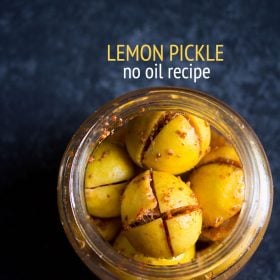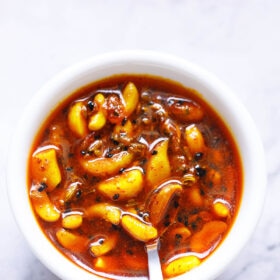This recipe made with the Indian gooseberry, popularly known as amla is an Andhra style spicy and super tasty Amla Pickle or Amla ka Achar. This Amla Pickle recipe or Indian Gooseberry Pickle is vegan friendly, uses just a few basic ingredients and can be made in a very simple method. You can prepare it and store it in the refrigerator too.
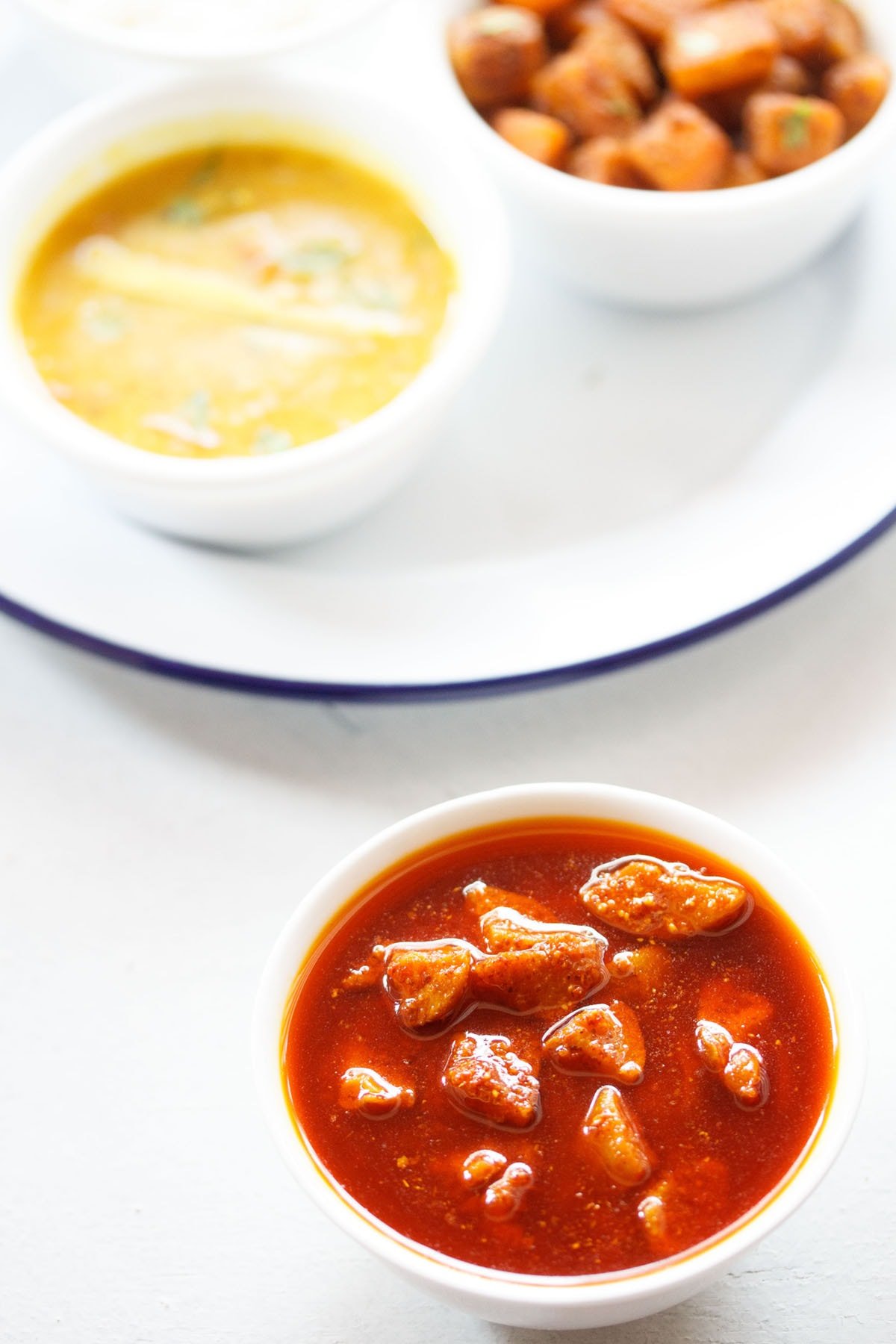
Table of Contents
Types of Pickles
Primarily, pickles can be of 3 types – preserved in oil, preserved in vinegar and preserved in brine or salt. An Indian pickle is majorly based on the first type where the choice of oil can vary, depending from one region to other.
For instance, in Northern India, pickles are usually made in mustard oil as compared to the South Indian pickles, like this particular Amla Avakaya, that use the fragrant sesame oil. Another famous one is this Avakaya or the Andhra Mango Pickle.
The Indian pickling tradition too has traveled through ages. We are firm believers of the fact that almost anything and everything (vegetables, fruits, leaves, berries and even roots) can be preserved with this age-old method.
More on this Amla Pickle
Since the time I had watched some YouTube videos for the method of preparing the Amla Pickle, also known as Amla Avakaya in Andhra Pradesh, I had been wanting to recreate it in my home kitchen as well.
Thus, I created my version of the Amla Pickle with my own measure of ingredients as well as added a few more steps to the original recipe. The final product is just as fab and you will only know it, after you try it too.
My trial resulted in a spicier Amla Pickle recipe, in which the sour taste of the amla merges excellently with the rustic and very earthy flavors of the mustard seeds and sesame oil. If you are aversive to sesame oil, you can also make it with peanut or sunflower oil.
Once you try it and eat it, you will realize that this Amla ka Achar gets over very soon. And that your family is going to request you to make more. It is this good!
Best way to savor the flavors of this pickle is to pair it with stuffed paratha, sambar-rice, dal-rice or curd rice. Or just mix it with some steamed rice and enjoy the goodness.
How to make Amla ka Achar
Prep Amla
1. Firstly, rinse 250 grams amla or Indian gooseberries a few times in water. Then, wipe them dry with a clean kitchen towel. Or you can spread them on a cotton napkin or a plate and let them dry naturally.
There should be no traces of water or moisture on the amla. Also make sure to use dry and clean spoons or bowls.
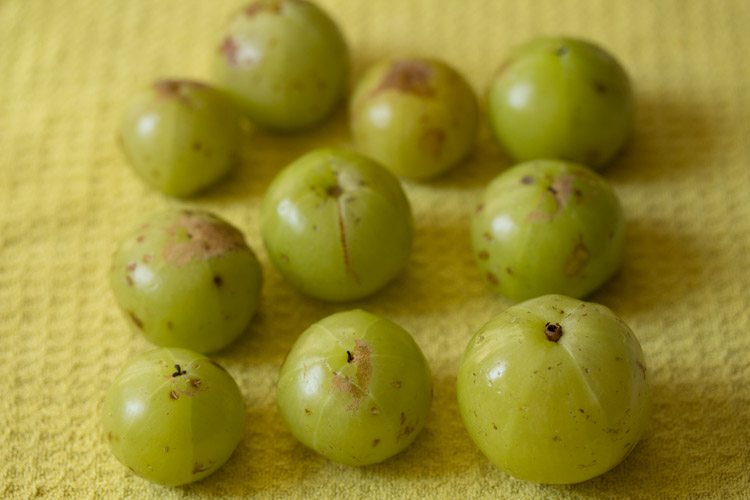
2. Then, add 2 tablespoons mustard seeds and ¼ teaspoon fenugreek seeds in a grinder.

3. Grind to a semi-fine powder. Set aside.
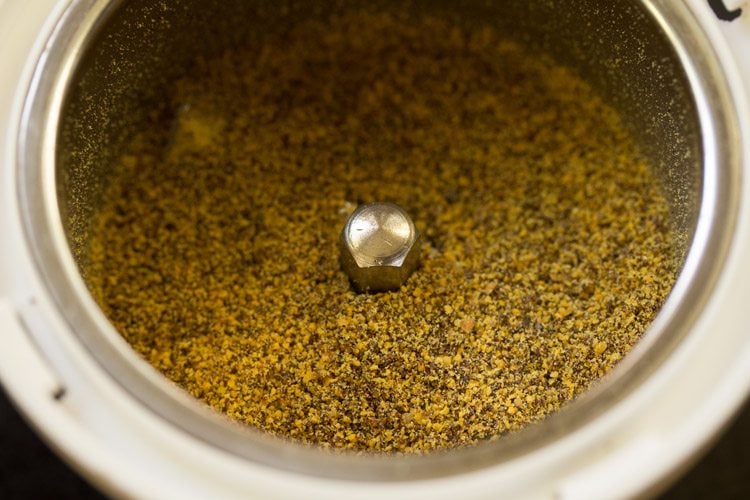
Cook Amla
4. Chop the amla and remove the seeds. Chopping amla takes time. Discard any bruised parts from the amla.
If the amla are small in size, you can keep them whole but give each of them a few slits so that they do not burst in oil while cooking.
I chopped them as I did not want the seeds to come in the mouth while eating.
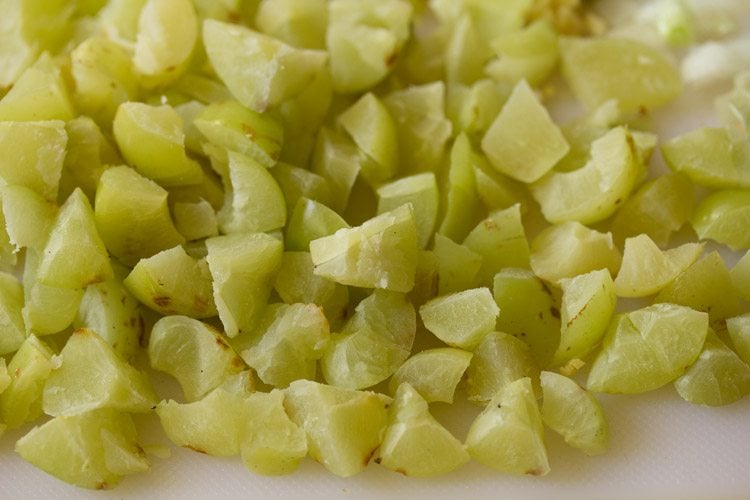
5. Heat ⅓ cup sesame oil (gingelly oil) in a kadai or pan.
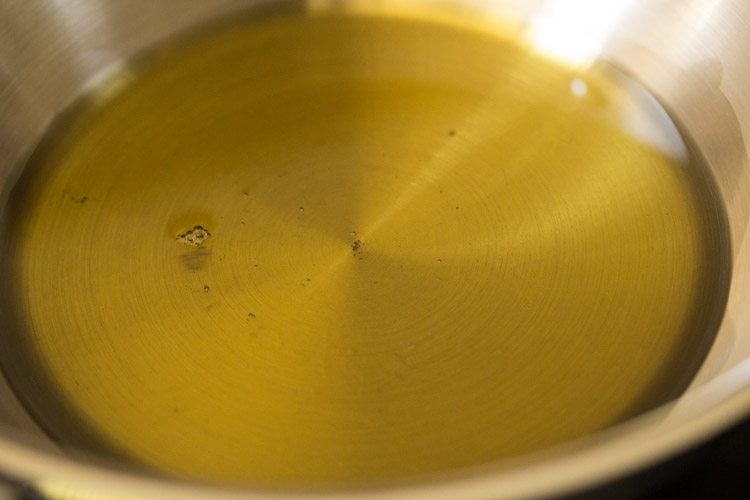
6. Add the chopped amla pieces.
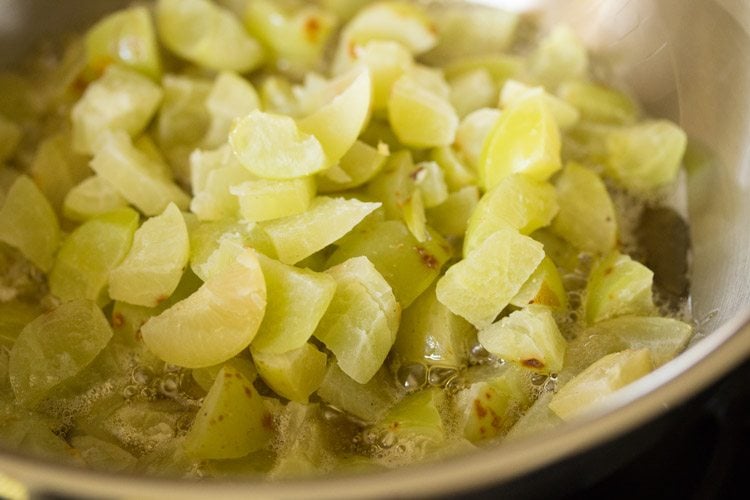
7. Mix well.
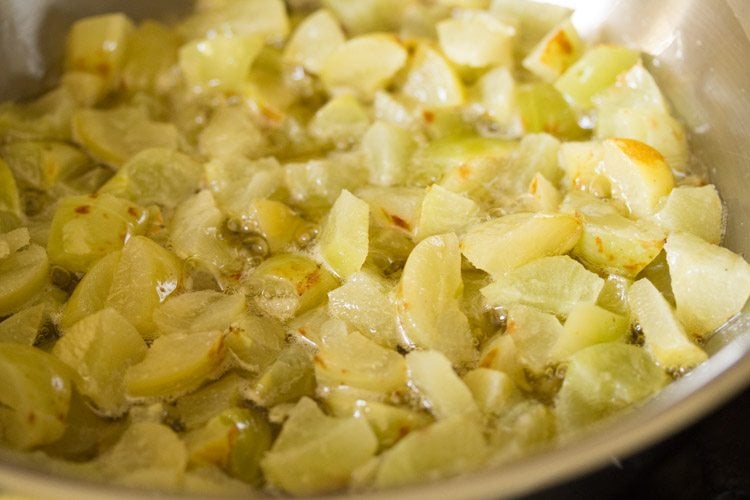
8. Cover the pan and let the amla pieces cook. Keep checking in between.
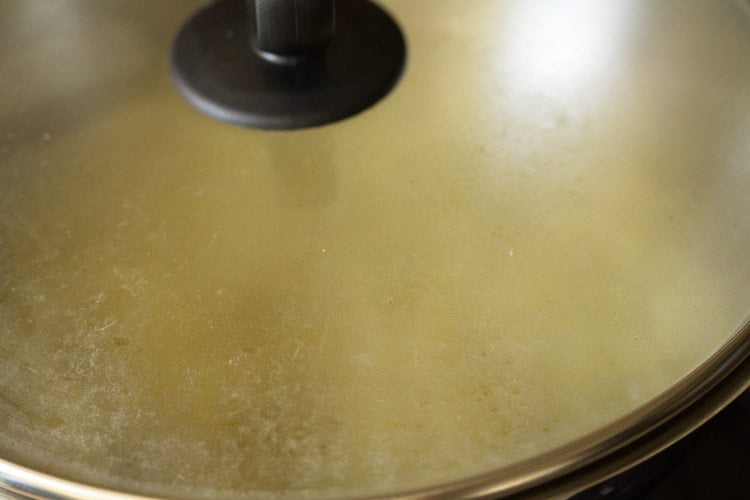
9. You don’t need to cook the amla pieces till golden. They should be cooked till soft. Slid a knife through a few pieces and it should slid easily. This cooking on a medium-low heat takes about 6 to 7 minutes.

10. Once the amla pieces are cooked, switch off the heat. Add 2 to 3 medium garlic cloves (crushed).
Mix well and let this mixture become warm. Set aside for about 10 minutes. Let the amla pieces be in the pan only.
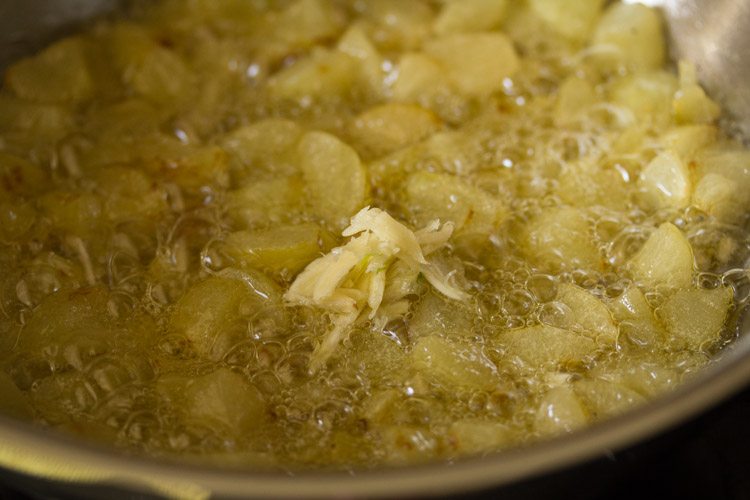
Make Amla ka Achar
11. When the amla and oil mixture becomes warm, add 3 tablespoons red chili powder, 1 teaspoon turmeric powder, 1 to 1.5 tablespoons salt and the prepared ground mustard seeds and fenugreek powder.
First, add 1 tablespoon salt. Mix very well. If you feel it is less, then add some more salt. If the pickle tastes more salty, then it’s fine as when it matures, the extra salty taste goes away.
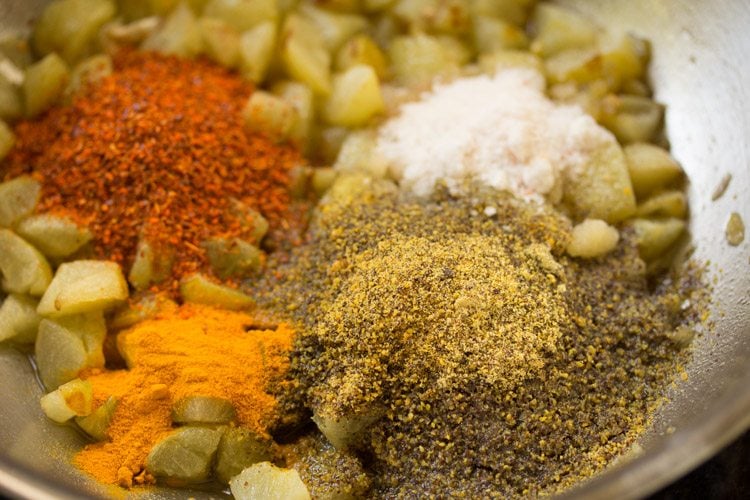
12. Mix very well and let the amla pickle mixture cool at room temperature.
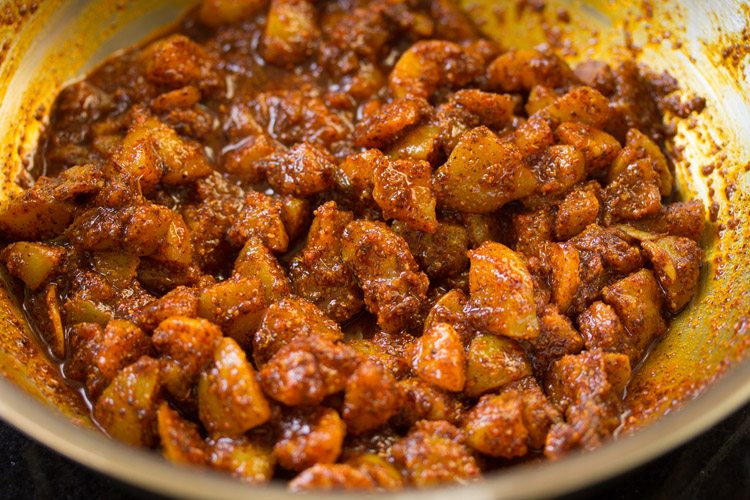
13. Now, add 1 tablespoon lemon juice.
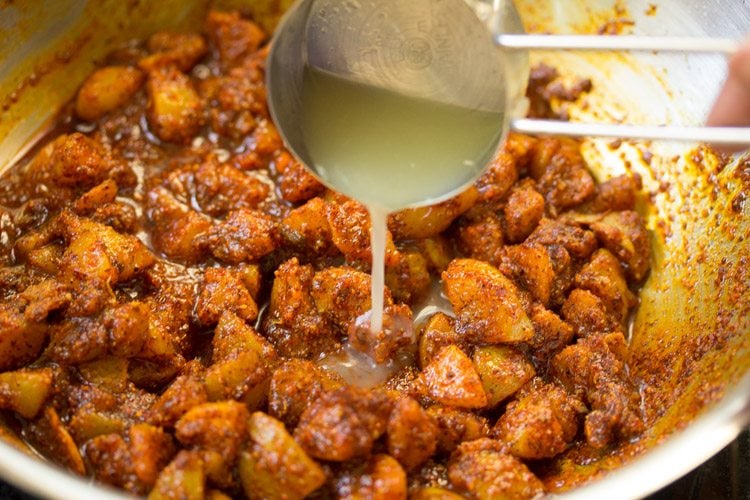
14. Mix again.
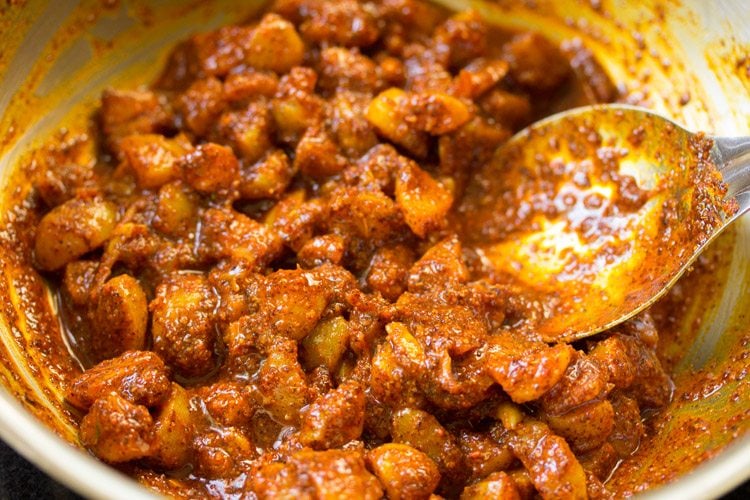
15. Spoon the pickle in a clean sterilized glass jar. Cover with a lid and keep aside.
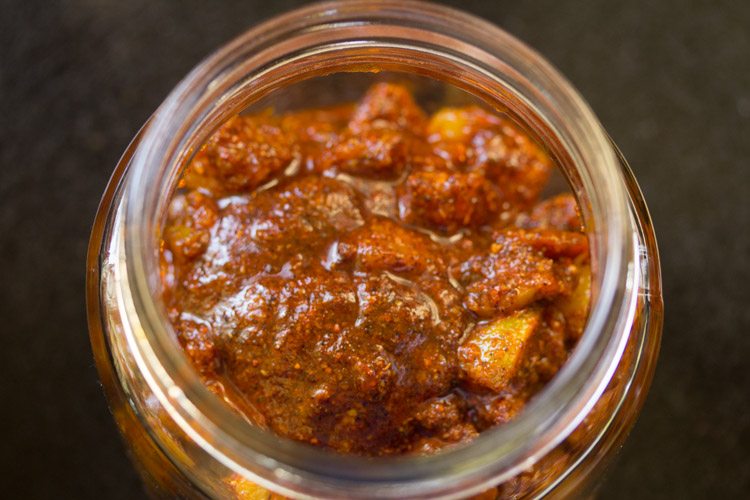
Temper Amla Pickle
16. Heat ¼ cup sesame oil in a small pan. This step is optional and can be skipped.
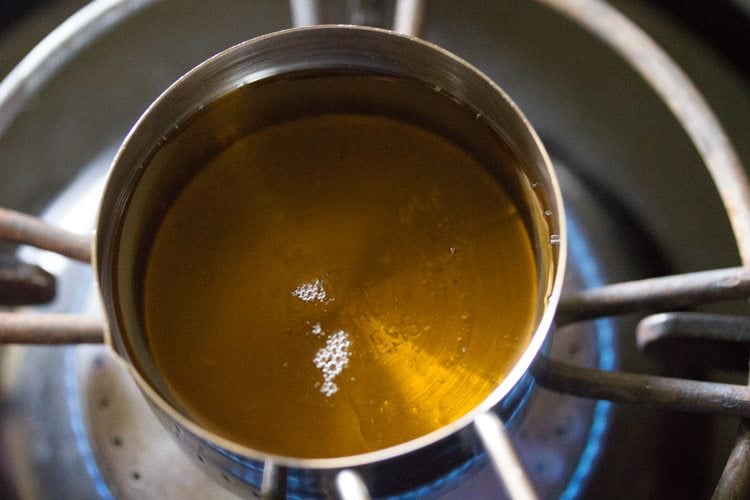
17. Keep the heat to a low and add ¼ teaspoon asafoetida (hing).
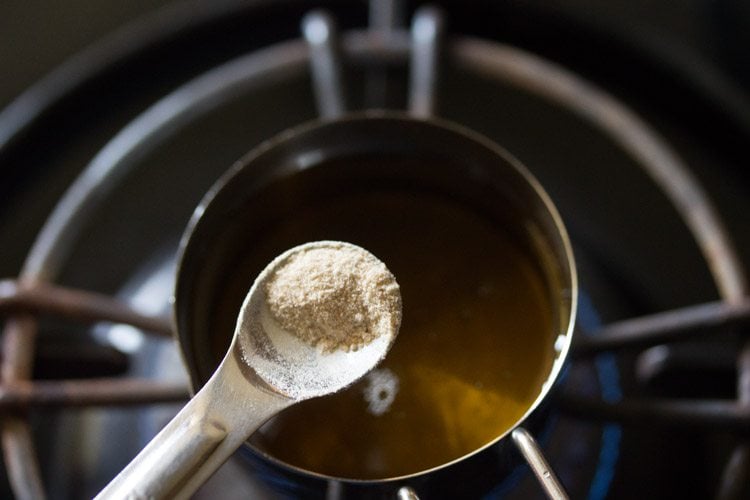
18. Mix well and switch off the heat. Let this oil cool completely at room temperature.

19. Then, pour this tempering in the pickle jar.

20. Some oil will float on top and that’s fine. Cover the jar with a lid and let the pickle mature for 3 to 4 days. Keep in a dry place.

21. After 3 to 4 days, the Amla Achar will be ready. Serve Amla Pickle with your everyday meal. After you begin to use the pickle, refrigerate it.
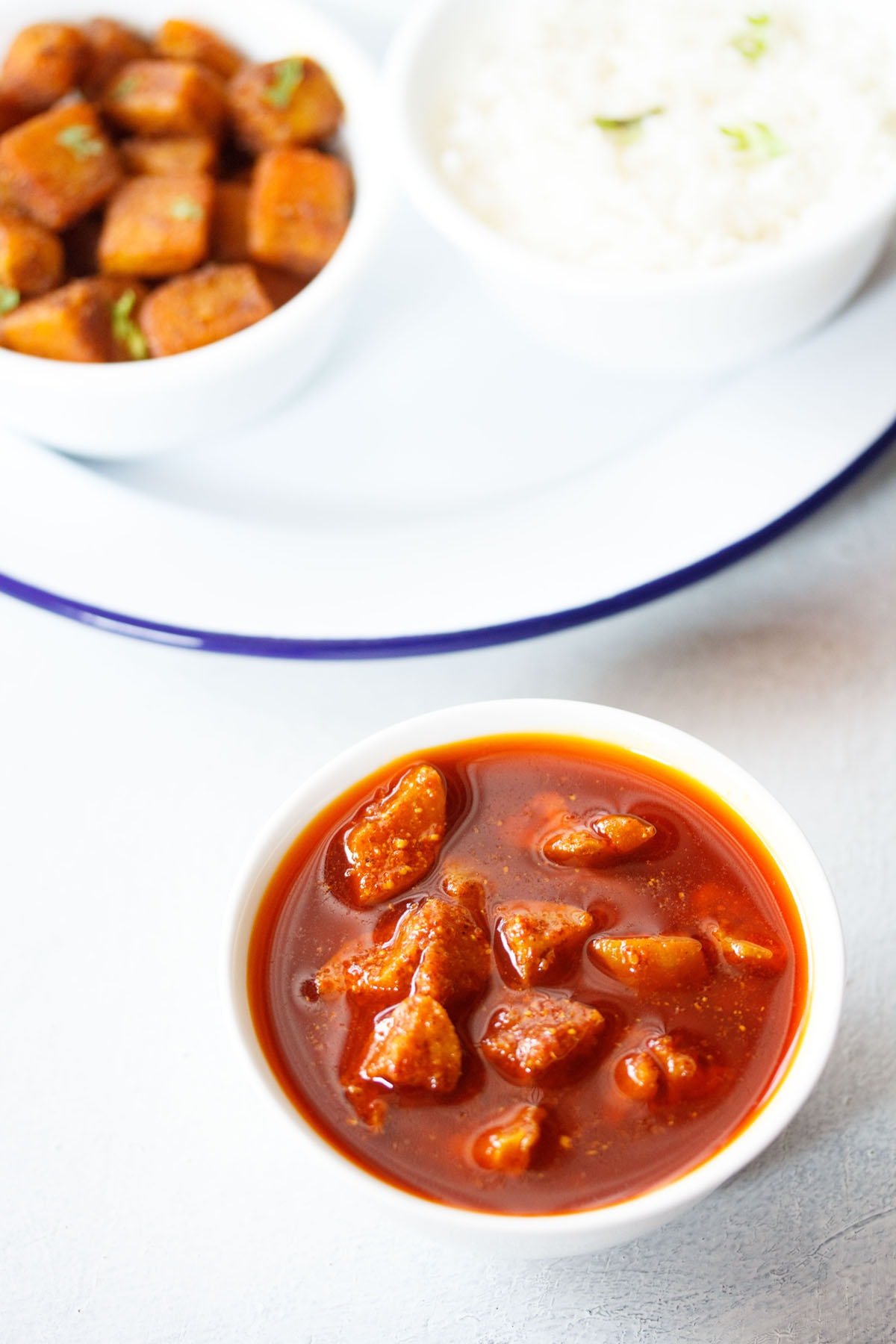
Indian Gooseberry Uses
Before the uses, why should you include amla in your diet?
Because the benefits include: high content of Vitamin C in it has anti-aging properties; great for the vision, hair and skin; boosts immunity; known to treat heartburns and promotes heart health; effective against many types of cancer; helps to lower blood sugar levels and protects against liver damage to name a few.
The best uses of Indian gooseberry or amla are:
- The sour taste makes it a perfect fit for pickles and preserve. The spiced tangy sweet preserve made from these gooseberries known as Amla Murabba is popular in India.
- The fruit can be easily made into yummy crushes and syrups that form a base of different mocktails.
- Amla can be juiced, mixed with some honey and consumed as a refreshing, healthy beverage. Plain amla juice is helpful in treating hair fall.
- Bored of having cut fruits just like that? Amp them up by sprinkling some amla powder on them.
- Indian gooseberries can be made into sautéed dishes or used in lentil dishes too.
- Interesting way of serving desserts? Stew some amla slices in sugar syrup and top your cakes, cheesecakes and tarts with it.
Expert Tips
- This Amla Pickle is quite high on the spice meter. Decrease the quantity of red chili powder if you want it less spicy.
- I use a good amount of oil while making pickles as it helps in extending the shelf-life of the pickle. You may use less oil if you wish to.
- You can prepare this pickle with either sunflower oil or peanut oil too, in place of sesame oil.
- This recipe of Amla Pickle will give you a small batch. Store the pickle in a glass jar or ceramic jar and not a plastic jar.
- Sunlight is not needed to make this Amla ka Achar. So you can choose to make this pickle easily when you do not get enough sunlight or there is a cloudy sky.
FAQs
Yes, you can use tamarind pulp. Use 2 tablespoons tamarind paste for 250 grams of amla. If you want a sourer taste, use 3 tablespoons. Make sure to cook/boil the tamarind paste with some water so that the raw taste and aroma goes away. The cooked tamarind should be thick.
Yes, you can use frozen amla too. Just thaw them first. Then, rinse, drain all the water and place the amlas on kitchen paper towels or cotton napkins so that the moisture is dried. Then, proceed with the recipe.
You can use sunflower oil or peanut oil instead of sesame oil. Avoid using mustard oil as its pungent.
Definitely, you can do that.
More Pickle Recipes To Try!
Pickle Recipes
Pickle Recipes
Pickle Recipes
Pickle Recipes
Please be sure to rate the recipe in the recipe card or leave a comment below if you have made it. For more vegetarian inspirations, Sign Up for my emails or follow me on Instagram, Youtube, Facebook, Pinterest or Twitter.
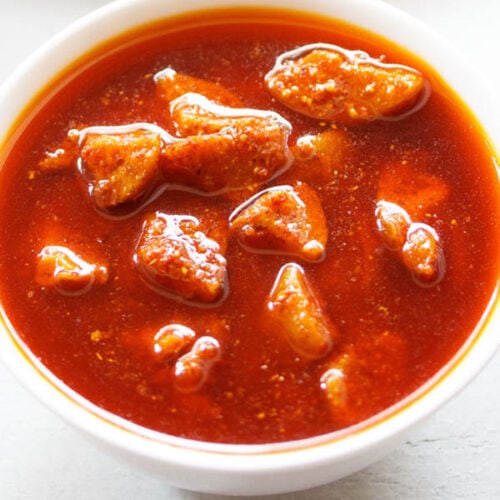
Amla ka Achar | Amla Pickle
Ingredients
- 250 grams Indian gooseberry (amla) or about 2 cups chopped amla
- ⅓ cup sesame oil (gingelly oil) for frying amla
- 2 to 3 garlic cloves – small to medium, slightly crushed
- 2 tablespoons mustard seeds or 3 tablespoon mustard seeds powder
- ¼ teaspoon fenugreek seeds
- 3 tablespoons red chili powder
- 1 teaspoon turmeric powder
- 1 to 1.5 tablespoons salt or add as required
- 1 tablespoon lemon juice
- ¼ cup sesame oil (gingelly oil) – to be added later
- ¼ teaspoon asafoetida (hing)
Instructions
Preparation
- Firstly, rinse the amla very well in water. Then, wipe them dry with a clean kitchen towel. Or you can spread them on a cotton napkin or a plate and let them dry naturally.
- Add mustard seeds and fenugreek seeds in a grinder.
- Grind to a semi-fine powder. Set aside.
Cooking amla
- Chop the amla and remove the seeds. Discard the seeds.
- Heat ⅓ cup sesame oil (gingelly oil) in a kadai or pan.
- Add the chopped amla pieces. Mix well.
- Cover the pan and let the amla pieces cook in oil. Keep checking in between.
- You don't need to cook the amla pieces till golden. They should be cooked till soft. Slid a knife through a few pieces and it should slid easily. This cooking on a medium-low heat takes about 6 to 7 minutes.
- Once the amla pieces are cooked, switch off the heat. Add 2 to 3 medium garlic cloves (crushed). Mix well and let this mixture become warm.
- Set aside for about 10 minutes and let the amla pieces be in the pan only. Do not remove them.
Making amla achar
- When the amla and oil mixture becomes warm, add red chili powder, turmeric powder, salt as required and the ground mustard seeds and fenugreek powder.
- First, add 1 tablespoon salt. Mix very well. Check the taste. If you feel it's less, then add some more salt. If the pickle tastes salty, then it's fine as when it matures, the extra salty taste goes away.
- Mix thoroughly. Let this mixture cool at room temperature.
- Add 1 tablespoon lemon juice when the pickle mixture has cooled. Mix again.
- Spoon the pickle in a clean sterilized glass jar. Cover with a lid and set aside.
Tempering for amla pickle
- Heat ¼ cup sesame oil in a small pan. This step is optional and can be skipped.
- Keep the heat to a low and add ¼ teaspoon asafoetida (hing).
- Mix well and switch off the heat. Let this oil cool at room temperature.
- Then, pour this tempering in the pickle jar. Some oil will float on top and that's fine. Cover the jar with a lid and let the pickle mature for 3 to 4 days. Keep in a dry place.
- Serve Amla Pickle or Amla ka Achar with your everyday meal. After you begin to use the pickle, refrigerate it.
Notes
- Use sesame oil that is made from raw sesame seeds. In South India, this sesame oil is also called gingelly oil.
- Reduce the red chilli powder for a less spicy pickle.
- Use glass jars for storing the pickle. You can also use ceramic jars.
- Once you start using the pickle, store in the refrigerator.
- Instead of lemon juice, use apple cider vinegar or white vinegar.
- Note that the approximate nutrition info is for the entire amla pickle.
Nutrition Info (Approximate Values)
This Amla Pickle recipe post from the archives first published in May 2017 has been republished and updated on 30 May 2022.

